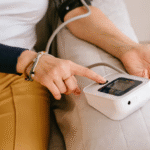Recovering at home after surgery, illness, or injury can be a comfortable and effective alternative to a hospital stay—if the right support is in place. One of the most important parts of that support is having the correct medical equipment at home. This equipment not only helps improve recovery but also provides safety, comfort, and peace of mind for both the patient and the caregiver.
In this article, we’ll break down the essential medical equipment you may need for home recovery, why each item matters, and how to make the recovery journey smoother and safer.
Why Is Home Medical Equipment Important?
Whether someone is recovering from a hip replacement, stroke, surgery, or chronic illness, home medical equipment helps in several ways:
- Increases comfort during healing
- Improves mobility and independence
- Reduces hospital readmissions
- Assists caregivers in delivering better support
- Prevents accidents like falls or pressure sores
The right setup can make all the difference in how quickly and safely someone recovers.
Essential Medical Equipment for Home Recovery
Let’s go over the most commonly needed equipment:
1. Hospital Bed
A hospital-style bed at home is crucial for many recovering patients. These beds are adjustable, making it easier to sit up, lie down, and change positions. This can prevent bedsores, improve breathing, and make caregiving easier.
Features to look for:
- Electric adjustment
- Side rails for safety
- Pressure-relieving mattress
2. Mobility Aids
Regaining movement after surgery or injury can take time. To avoid strain or falls, mobility aids are essential.
Common types include:
- Walkers: For patients needing full support
- Canes: For balance and minor support
- Wheelchairs: For those with limited walking ability
- Crutches: After leg injuries or surgeries
Choose the aid that suits the patient’s condition and strength level.
3. Shower and Bathroom Safety Equipment
Bathrooms can be dangerous places for someone recovering, especially those with balance issues.
Helpful items include:
- Shower chairs: Allow sitting while bathing
- Grab bars: For support in and out of showers/tubs
- Raised toilet seats: Reduce the effort of sitting/standing
- Non-slip mats: Prevent falls on wet floors
These small additions can prevent major accidents.
4. Wound Care Supplies
For post-surgical recovery or chronic wound care, keeping wounds clean and dressed properly is key to healing.
You may need:
- Sterile bandages
- Antiseptic solution
- Gauze, tape, and gloves
- Wound irrigation kits
It’s important to follow the doctor’s wound care instructions strictly.
5. Oxygen Therapy Equipment
Some patients recovering from respiratory issues like pneumonia or COVID-19 may require supplemental oxygen at home.
Equipment includes:
- Oxygen concentrator
- Oxygen tanks (if needed)
- Nasal cannula or face mask
- Pulse oximeter to check oxygen levels
A healthcare provider should guide how and when to use these safely.
6. Medication Management Tools
Managing multiple medications during recovery can be confusing and risky without proper organization.
Helpful tools:
- Weekly pill organizers
- Medication reminder alarms
- Lockable cabinets (especially if children are around)
- Auto-dispensing medication machines (for seniors)
These tools reduce missed or double doses, which can be harmful.
7. Lift or Transfer Devices
If the patient is immobile or partially mobile, a transfer device can assist in moving them from bed to wheelchair or toilet without straining the caregiver.
Options include:
- Transfer boards
- Mechanical patient lifts (Hoyer lifts)
- Bed assist bars
These tools preserve safety and dignity for both patient and caregiver.
8. Compression Devices
For those at risk of blood clots (e.g., after surgery or long bedrest), compression equipment can help circulation.
Examples:
- Compression stockings
- Sequential compression devices (SCDs)
These may be doctor-prescribed and used as a preventive measure.
9. Nutrition and Feeding Tools
If eating is difficult during recovery, special feeding tools may be necessary.
Examples include:
- Adaptive utensils (for those with limited hand control)
- Blender for soft or pureed foods
- Feeding tubes (for critical recovery cases, under supervision)
Nutrition is a vital part of healing, so supporting proper intake is key.
10. Monitoring and Vital Sign Devices
Tracking recovery progress from home helps avoid complications and unnecessary trips to the hospital.
Common tools:
- Thermometer
- Blood pressure monitor
- Glucometer (for diabetics)
- Pulse oximeter
Logging daily results helps the healthcare team monitor recovery remotely.
How to Choose the Right Equipment?
Not every recovery situation requires all of the above. Here are steps to guide your choices:
- Get a doctor’s evaluation: They will recommend what’s necessary based on the patient’s condition.
- Consult with a home health provider: They can assess the home and suggest suitable tools.
- Consider rental vs. purchase: For short-term recovery, renting larger equipment like hospital beds or oxygen machines can save money.
- Check insurance or Medicare coverage: Many essential items may be covered partially or fully.
Tips for Setting Up a Recovery-Friendly Home
- Create a main recovery area on the ground floor to avoid stairs.
- Clear pathways for walkers or wheelchairs.
- Keep essentials within reach – phones, water, medication, etc.
- Ensure proper lighting, especially for night-time movements.
- Involve family and caregivers in setup and safety checks.
5 Most Common FAQs
1. Do I need a hospital bed at home after surgery?
If the patient has limited mobility or needs help sitting up, a hospital bed can be very helpful. It reduces the risk of falls and makes caregiving easier.
2. What equipment is usually covered by insurance or Medicare?
Typically, durable medical equipment (DME) like hospital beds, walkers, wheelchairs, and oxygen may be partially or fully covered, but a doctor’s prescription is often required.
3. Can I rent medical equipment instead of buying it?
Yes, many suppliers offer rental options for beds, wheelchairs, lifts, and more—ideal for short-term recoveries.
4. How can I ensure safety in the bathroom during recovery?
Install grab bars, use a shower chair, add a non-slip mat, and consider a raised toilet seat. These changes reduce fall risks dramatically.
5. What if I don’t know what my loved one will need during recovery?
Start by asking the doctor or hospital discharge planner. They often provide a list or refer you to a home health agency for a professional evaluation.
Final Thoughts
Recovering at home can be both healing and empowering—if the right support and equipment are available. Every person’s recovery needs are different, so working with medical professionals to customize the equipment list is important.
From mobility aids to wound care, each tool plays a role in making daily life safer and more manageable. Don’t hesitate to ask for guidance, take time to set things up properly, and remember: the more comfortable and safe the environment, the quicker and smoother the recovery.




